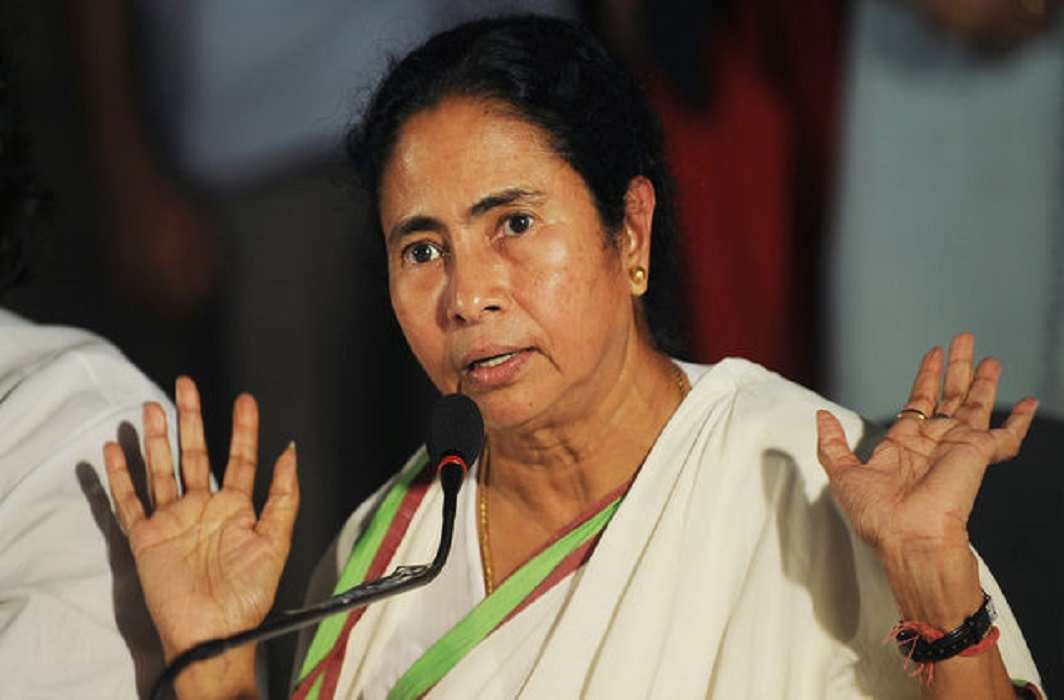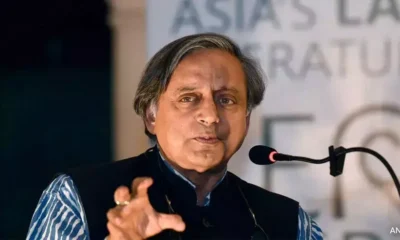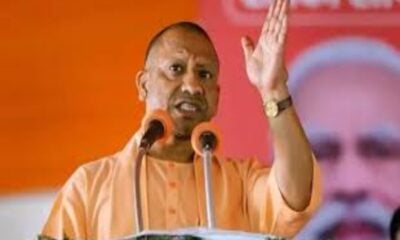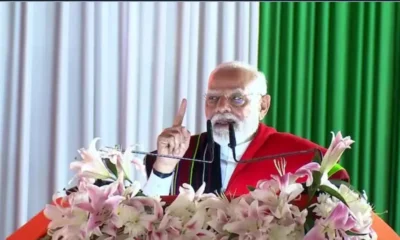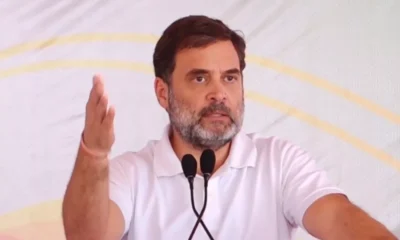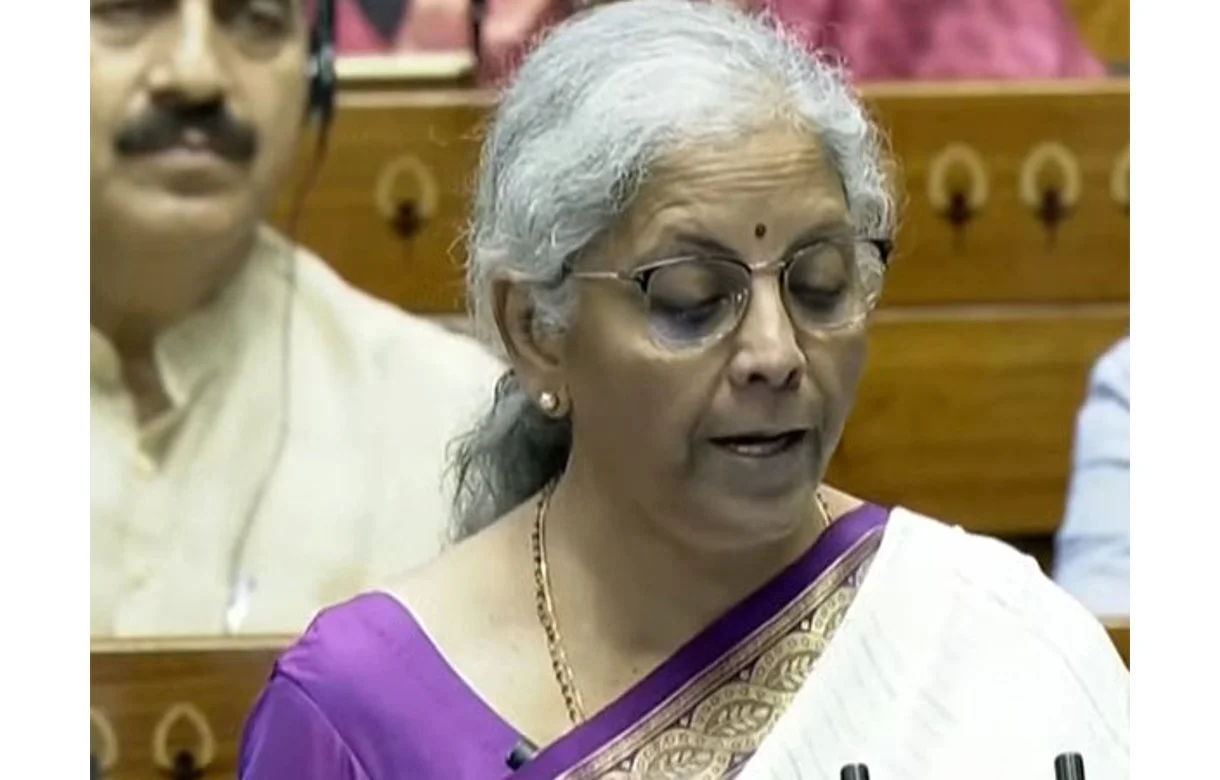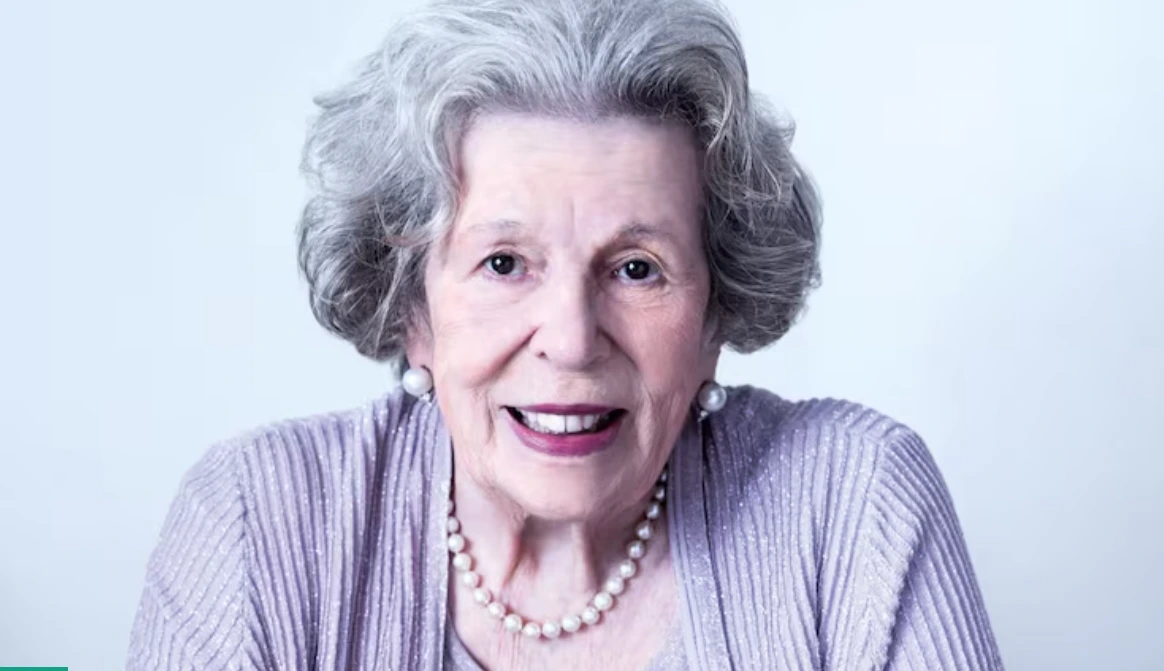[vc_row][vc_column][vc_column_text]
A former union minister and AIFF chief, Priya Ranjan Dasmunsi had suffered a fatal cardiac arrest in October 2008 which left him in a vegetative state
Over eight years after he suffered a massive cardiac arrest that left him in a comatose state and confined him to a hospital bed, former Union minister and Congress veteran from Bengal, Priya Ranjan Dasmunsi breathed his last on Monday afternoon at the Apollo Hospital in New Delhi.
[/vc_column_text][vc_raw_html]JTNDYmxvY2txdW90ZSUyMGNsYXNzJTNEJTIydHdpdHRlci10d2VldCUyMiUyMGRhdGEtbGFuZyUzRCUyMmVuJTIyJTNFJTNDcCUyMGxhbmclM0QlMjJlbiUyMiUyMGRpciUzRCUyMmx0ciUyMiUzRU1lbWJlcnMlMjBvZiUyMHRoZSUyMFBhcnR5JTIwcGFpZCUyMHRoZWlyJTIwbGFzdCUyMHJlc3BlY3RzJTIwdG8lMjBGb3JtZXIlMjBVbmlvbiUyME1pbmlzdGVyJTIwJTI2YW1wJTNCJTIwU2VuaW9yJTIwQ29uZ3Jlc3MlMjBMZWFkZXIlMjBTaHJpJTIwUHJpeWElMjBSYW5qYW4lMjBEYXNtdW5zaSUyMGF0JTIwQUlDQy4lMjAlM0NhJTIwaHJlZiUzRCUyMmh0dHBzJTNBJTJGJTJGdC5jbyUyRmhtR3dQWUM3cEolMjIlM0VwaWMudHdpdHRlci5jb20lMkZobUd3UFlDN3BKJTNDJTJGYSUzRSUzQyUyRnAlM0UlMjZtZGFzaCUzQiUyMENvbmdyZXNzJTIwJTI4JTQwSU5DSW5kaWElMjklMjAlM0NhJTIwaHJlZiUzRCUyMmh0dHBzJTNBJTJGJTJGdHdpdHRlci5jb20lMkZJTkNJbmRpYSUyRnN0YXR1cyUyRjkzMjU4NzIyMzg4NjcwODczNiUzRnJlZl9zcmMlM0R0d3NyYyUyNTVFdGZ3JTIyJTNFTm92ZW1iZXIlMjAyMCUyQyUyMDIwMTclM0MlMkZhJTNFJTNDJTJGYmxvY2txdW90ZSUzRSUwQSUzQ3NjcmlwdCUyMGFzeW5jJTIwc3JjJTNEJTIyaHR0cHMlM0ElMkYlMkZwbGF0Zm9ybS50d2l0dGVyLmNvbSUyRndpZGdldHMuanMlMjIlMjBjaGFyc2V0JTNEJTIydXRmLTglMjIlM0UlM0MlMkZzY3JpcHQlM0U=[/vc_raw_html][vc_column_text]
Articulate and multifaceted, Priya Ranjan Dasmunsi or Priya Da as he was addressed by all and sundry, was a master in political manoeuvering and the topmost leader of the youth brigade that took West Bengal by storm in the late 1960s, to sideline the Communists and bring back the Congress to power in 1972.
It was a time when the Maoist movement went from strength to strength in the state, with bright youngsters leaving schools, colleges and universities to follow Charu Majumdar’s doctrine of annihilating ‘class enemies’, that virtually saw a bloodbath over the years.
[/vc_column_text][vc_raw_html]JTNDYmxvY2txdW90ZSUyMGNsYXNzJTNEJTIydHdpdHRlci10d2VldCUyMiUyMGRhdGEtbGFuZyUzRCUyMmVuJTIyJTNFJTNDcCUyMGxhbmclM0QlMjJlbiUyMiUyMGRpciUzRCUyMmx0ciUyMiUzRVNocmklMjBQcml5YSUyMFJhbmphbiUyMERhc211bnNpJTIwc2VydmVkJTIwdGhlJTIwcGFydHklMjAlMjZhbXAlM0IlMjBHb3Zlcm5tZW50JTIwaWxsdXN0cmlvdXNseSUyQyUyMGluJTIwaGlzJTIwY2FyZWVyJTIwc3Bhbm5pbmclMjBmaXZlJTIwZGVjYWRlcy4lMjBIaXMlMjBkZWF0aCUyMGlzJTIwYW4lMjBpcnJlcGFyYWJsZSUyMGxvc3MlMjBhbmQlMjBJJTIwcHJheSUyMGZvciUyMHBlYWNlJTIwZm9yJTIwaGlzJTIwc291bCUyMGFuZCUyMGZhbWlseSUzQSUyMFNtdC4lMjBTb25pYSUyMEdhbmRoaSUzQyUyRnAlM0UlMjZtZGFzaCUzQiUyMENvbmdyZXNzJTIwJTI4JTQwSU5DSW5kaWElMjklMjAlM0NhJTIwaHJlZiUzRCUyMmh0dHBzJTNBJTJGJTJGdHdpdHRlci5jb20lMkZJTkNJbmRpYSUyRnN0YXR1cyUyRjkzMjUzNzIwMTczNjQwOTA4OCUzRnJlZl9zcmMlM0R0d3NyYyUyNTVFdGZ3JTIyJTNFTm92ZW1iZXIlMjAyMCUyQyUyMDIwMTclM0MlMkZhJTNFJTNDJTJGYmxvY2txdW90ZSUzRSUwQSUzQ3NjcmlwdCUyMGFzeW5jJTIwc3JjJTNEJTIyaHR0cHMlM0ElMkYlMkZwbGF0Zm9ybS50d2l0dGVyLmNvbSUyRndpZGdldHMuanMlMjIlMjBjaGFyc2V0JTNEJTIydXRmLTglMjIlM0UlM0MlMkZzY3JpcHQlM0U=[/vc_raw_html][vc_raw_html]JTNDYmxvY2txdW90ZSUyMGNsYXNzJTNEJTIydHdpdHRlci10d2VldCUyMiUyMGRhdGEtbGFuZyUzRCUyMmVuJTIyJTNFJTNDcCUyMGxhbmclM0QlMjJlbiUyMiUyMGRpciUzRCUyMmx0ciUyMiUzRVdlJTIwd2lsbCUyMG1pc3MlMjBQcml5YSUyMFJhbmphbiUyMERhc211bnNpJTIwamkuJTIwQSUyMGJyaWxsaWFudCUyMHBvbGl0aWNhbCUyMG1pbmQlMjBhbmQlMjBhJTIwZ29vZCUyMGh1bWFuJTIwYmVpbmcuJTIwQmVuZ2FsJTIwYW5kJTIwdGhlJTIwQ29uZ3Jlc3MlMjBwYXJ0eSUyMGhhdmUlMjBsb3N0JTIwYSUyMHRhbGwlMjBsZWFkZXIuJTIwT3VyJTIwdGhvdWdodHMlMjBhcmUlMjB3aXRoJTIwRGVlcGElMjBqaSUyMHRvZGF5LiUzQyUyRnAlM0UlMjZtZGFzaCUzQiUyME9mZmljZSUyMG9mJTIwUkclMjAlMjglNDBPZmZpY2VPZlJHJTI5JTIwJTNDYSUyMGhyZWYlM0QlMjJodHRwcyUzQSUyRiUyRnR3aXR0ZXIuY29tJTJGT2ZmaWNlT2ZSRyUyRnN0YXR1cyUyRjkzMjUzMzMyMzAzMjg1ODYyNCUzRnJlZl9zcmMlM0R0d3NyYyUyNTVFdGZ3JTIyJTNFTm92ZW1iZXIlMjAyMCUyQyUyMDIwMTclM0MlMkZhJTNFJTNDJTJGYmxvY2txdW90ZSUzRSUwQSUzQ3NjcmlwdCUyMGFzeW5jJTIwc3JjJTNEJTIyaHR0cHMlM0ElMkYlMkZwbGF0Zm9ybS50d2l0dGVyLmNvbSUyRndpZGdldHMuanMlMjIlMjBjaGFyc2V0JTNEJTIydXRmLTglMjIlM0UlM0MlMkZzY3JpcHQlM0U=[/vc_raw_html][vc_raw_html]JTNDYmxvY2txdW90ZSUyMGNsYXNzJTNEJTIydHdpdHRlci10d2VldCUyMiUyMGRhdGEtbGFuZyUzRCUyMmVuJTIyJTNFJTNDcCUyMGxhbmclM0QlMjJlbiUyMiUyMGRpciUzRCUyMmx0ciUyMiUzRVNocmklMjBQcml5YSUyMFJhbmphbiUyMERhc211bnNpJTIwd2FzJTIwYSUyMHBvcHVsYXIlMjBsZWFkZXIlMjB3aXRoJTIwcmljaCUyMHBvbGl0aWNhbCUyMGFuZCUyMGFkbWluaXN0cmF0aXZlJTIwZXhwZXJpZW5jZS4lMjBIZSUyMGRpZCUyMG5vdGFibGUlMjB3b3JrJTIwdG8lMjBwb3B1bGFyaXNlJTIwZm9vdGJhbGwlMjBpbiUyMEluZGlhLiUyMFNhZGRlbmVkJTIwYnklMjBoaXMlMjBkZW1pc2UuJTIwTXklMjB0aG91Z2h0cyUyMGFyZSUyMHdpdGglMjBEZWVwYSUyMERhc211bnNpJTIwamklMjBhbmQlMjBmYW1pbHklMjBhcyUyMHdlbGwlMjBhcyUyMGhpcyUyMHN1cHBvcnRlcnMuJTNDJTJGcCUzRSUyNm1kYXNoJTNCJTIwTmFyZW5kcmElMjBNb2RpJTIwJTI4JTQwbmFyZW5kcmFtb2RpJTI5JTIwJTNDYSUyMGhyZWYlM0QlMjJodHRwcyUzQSUyRiUyRnR3aXR0ZXIuY29tJTJGbmFyZW5kcmFtb2RpJTJGc3RhdHVzJTJGOTMyNTMxMzE5MDUzMDQxNjY0JTNGcmVmX3NyYyUzRHR3c3JjJTI1NUV0ZnclMjIlM0VOb3ZlbWJlciUyMDIwJTJDJTIwMjAxNyUzQyUyRmElM0UlM0MlMkZibG9ja3F1b3RlJTNFJTBBJTNDc2NyaXB0JTIwYXN5bmMlMjBzcmMlM0QlMjJodHRwcyUzQSUyRiUyRnBsYXRmb3JtLnR3aXR0ZXIuY29tJTJGd2lkZ2V0cy5qcyUyMiUyMGNoYXJzZXQlM0QlMjJ1dGYtOCUyMiUzRSUzQyUyRnNjcmlwdCUzRQ==[/vc_raw_html][vc_column_text]
Dasmunsi was then the magnet for those young men and women, who disagreed with the Communist Party of India-Marxist (CPI-M) – the main force of the two United Front governments in the state in 1967 and 1969 – as also the policy of the bullets espoused by the Maoists.
First as a student leader in the Calcutta University, and then as a brilliant Youth Congress organiser, Dasmunsi was a major draw with his fiery oratory and many of his proteges like Subrata Mukherjee and Saugata Roy went on to occupy key positions in the government, state Congress, and in later years, to the breakaway Trinamool Congress.
The student and youth movements, militant, but pacifist compared to the Maoist line, enabled Siddhartha Shankar Ray to become the chief minister at the head of a Congress government. At the same time, it gave birth to bitter factional fights in the state-unit of the Congress party, which continue to this day.
Groupism and lobby politics have often been cited as key reasons for the Congress singlehandedly failing to dislodge the Communist-led Left Front government that remained in power for 34 years till 2011, when Mamata Banerjee’s Trinamool Congress combined with the Congress to take over power. Mamata herself was a protégé of Dasmunsi and during her days in the Congress party, whenever she would throw one of her famous tantrums, the party high command would leave it to Priya Da to pacify the feisty leader.
[/vc_column_text][vc_raw_html]JTNDYmxvY2txdW90ZSUyMGNsYXNzJTNEJTIydHdpdHRlci10d2VldCUyMiUyMGRhdGEtbGFuZyUzRCUyMmVuJTIyJTNFJTNDcCUyMGxhbmclM0QlMjJlbiUyMiUyMGRpciUzRCUyMmx0ciUyMiUzRUklMjBhbSUyMGRlZXBseSUyMHNhZGRlbmVkJTIwYnklMjB0aGUlMjBkZWF0aCUyMG9mJTIwUHJpeWElMjBSYW5qYW4lMjBEYXNtdW5zaS4lMjBJdCUyMGlzJTIwYSUyMGdyZWF0JTIwbG9zcy4lMjBNYXklMjBoaXMlMjBzb3VsJTIwcmVzdCUyMGluJTIwcGVhY2UlMjAlM0NhJTIwaHJlZiUzRCUyMmh0dHBzJTNBJTJGJTJGdC5jbyUyRllMeWVGYUJZbTklMjIlM0VwaWMudHdpdHRlci5jb20lMkZZTHllRmFCWW05JTNDJTJGYSUzRSUzQyUyRnAlM0UlMjZtZGFzaCUzQiUyME1hbWF0YSUyMEJhbmVyamVlJTIwJTI4JTQwTWFtYXRhT2ZmaWNpYWwlMjklMjAlM0NhJTIwaHJlZiUzRCUyMmh0dHBzJTNBJTJGJTJGdHdpdHRlci5jb20lMkZNYW1hdGFPZmZpY2lhbCUyRnN0YXR1cyUyRjkzMjUzNTg0ODUxOTYxMDM2OSUzRnJlZl9zcmMlM0R0d3NyYyUyNTVFdGZ3JTIyJTNFTm92ZW1iZXIlMjAyMCUyQyUyMDIwMTclM0MlMkZhJTNFJTNDJTJGYmxvY2txdW90ZSUzRSUwQSUzQ3NjcmlwdCUyMGFzeW5jJTIwc3JjJTNEJTIyaHR0cHMlM0ElMkYlMkZwbGF0Zm9ybS50d2l0dGVyLmNvbSUyRndpZGdldHMuanMlMjIlMjBjaGFyc2V0JTNEJTIydXRmLTglMjIlM0UlM0MlMkZzY3JpcHQlM0U=[/vc_raw_html][vc_column_text]
A grieving Subrata Mukherjee recalled the turbulent 60s and 70s. “I have become fatherless again. In my politics, as also at a personal level, I had only Priya Da. We were a pair. Everybody used to say Priya-Subrata. We lived together in a commune. We studied in Calcutta University. He even cooked for me. He led a high-quality student movement under the banner of the Chhatra Parishad. It was because of him that the Left led United Front lost power, and SS Ray became chief minister,” Mukherjee said.
Dasmunsi’s talent saw his meteoric rise in the 1970s in the Congress, then led by Indira Gandhi. He became an All India Congress Committee member in 1970 and was made the state youth Congress chief the same year. A year later, he entered the Lok Sabha from the then South Calcutta seat at the young age of 26.
As early as 1971, he was elected president of All India Youth Congress, a position he held till 1975, when Sanjay Gandhi removed him to anoint Ambika Soni to the post.
Dasmunsi did not take the snub kindly, and left the Congress in 1979, when the party split after it lost power at the Centre in 1977 at the height of the anti-Emergency wave. He joined the Congress (Socialist), became its West Bengal president and is said to have commented in public meetings that he would rather change his religion or eat cow-dung than return to the parent party.
But that he did after the Congress rode back to power in 1980, though Indira Gandhi never forgave him for turning against her during her difficult days.
In 1984, Dasmunsi returned to the Lok Saba from Howrah constituency by exploiting the sentiments of the jobless youths in the area. In meeting after meeting, he displayed a key and declared: “This is the key to open all closed factories and industries.”
It was a promise too farfetched in a developing nation. But then, it was typical Dasmunsi – captivating people with his gift of the gab and promising them the moon. It also showed his convincing ability and endearing personality.
In 1985, Prime Minister Rajiv Gandhi inducted Dasmunsi in his council of ministers as Minister of State for Commerce. Subsequently, he was also made president of the state Congress, but the party lost badly to the Left Front in the 1987 state assembly polls despite Gandhi’s vigorous campaign.
Dasmunsi lost the Lok Sabha polls from Howrah in 1989, with many saying his failed promise to reopen factories led to the debacle. He again bit the dust in 1991 but re-entered the Lok Sabha in 1996 from the same constituency – an indicator of the gritty fighter he was.
In 1999, Dasmunsi successfully fought the Lok Sabha elections from Raiganj (now under Uttar Dinajpur district) and repeated his success in 2004.
Dasmunsi also served as Minister of Information and Broadcasting and Parliamentary Affairs in Prime Minister Manmohan Singh’s cabinet from 2004 to 2008, when he suffered a paralytic stroke, lost his power of speech and went into a coma from which he never came out.
As the Union information and broadcasting minister, Dasmunsi banned several western television networks, calling their broadcasts obscene. During his tenure, the Centre got Indian sports broadcaster Nimbus to share broadcast rights for Indian cricket matches with the state-run Doordarshan, a decision that didn’t go down well with Nimbus which had paid crores of rupees for exclusive broadcast rights.
A lesser known fact about Dasmunsi’s term as I&B minister was that he had denied permission to controversial televangelist Zakir Naik for airing his Peace TV – Naik came under fire from the Centre in 2016 for speeches he made on the channel which were seen as condoning terrorism. Interestingly, Dasmunsi’s decision to deny airing rights for Peace TV could not be implemented and he was replaced by Ambika Soni, the Congress leader who had many years ago abruptly been named as his successor to the post of All India Youth Congress president.
As the Union parliamentary affairs minister too, Dasmunsi shone. He along with another Congress veteran from Bengal – then External Affairs minister Pranab Mukherjee – were instrumental in ensuring that the UPA government’s floor management in the Lok Sabha helped Prime Minister Dr Manmohan Singh survive the no-confidence motion brought against his government in wake of the Indo-US Nuclear Deal on July 22, 2008. Troubleshooting and ensuring that the Treasury benches were able to survive regular attacks in Parliament from the Opposition and even the Left Front, which then had extended outside support to the UPA-I government were key achievements of Dasmunsi as the parliamentary affairs minister at a time when, unlike the UPA-II days, the Congress had lesser numbers in the Lok Sabha.
Dasmunsi stewarded the All India Football Federation (AIFF) country’s football for close to two decades till 2008, when, after his illness, Praful Patel took over the reins. As AIFF president, Dasmunsi started the National Football League in 1996, served as match commissioner in the 2006 FIFA World Cup in Germany and organised the Millennium Cup international tournament in 2000.
Dasmunsi is survived by his wife Deepa Dasmunsi and son Priyadeep. Deepa represented the Raiganj constituency after her husband’s hospitalization and incapacity to contest polls. She, however, lost from the Raiganj seat in the 2014 general election.
(With Agency inputs)
[/vc_column_text][/vc_column][/vc_row]

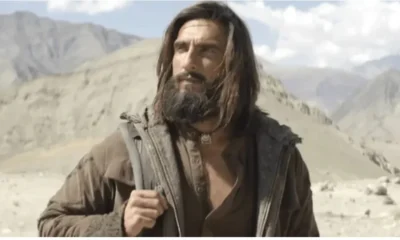
 Entertainment11 hours ago
Entertainment11 hours ago
 India News16 hours ago
India News16 hours ago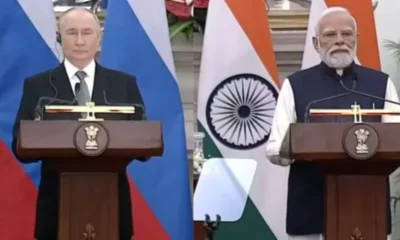
 India News11 hours ago
India News11 hours ago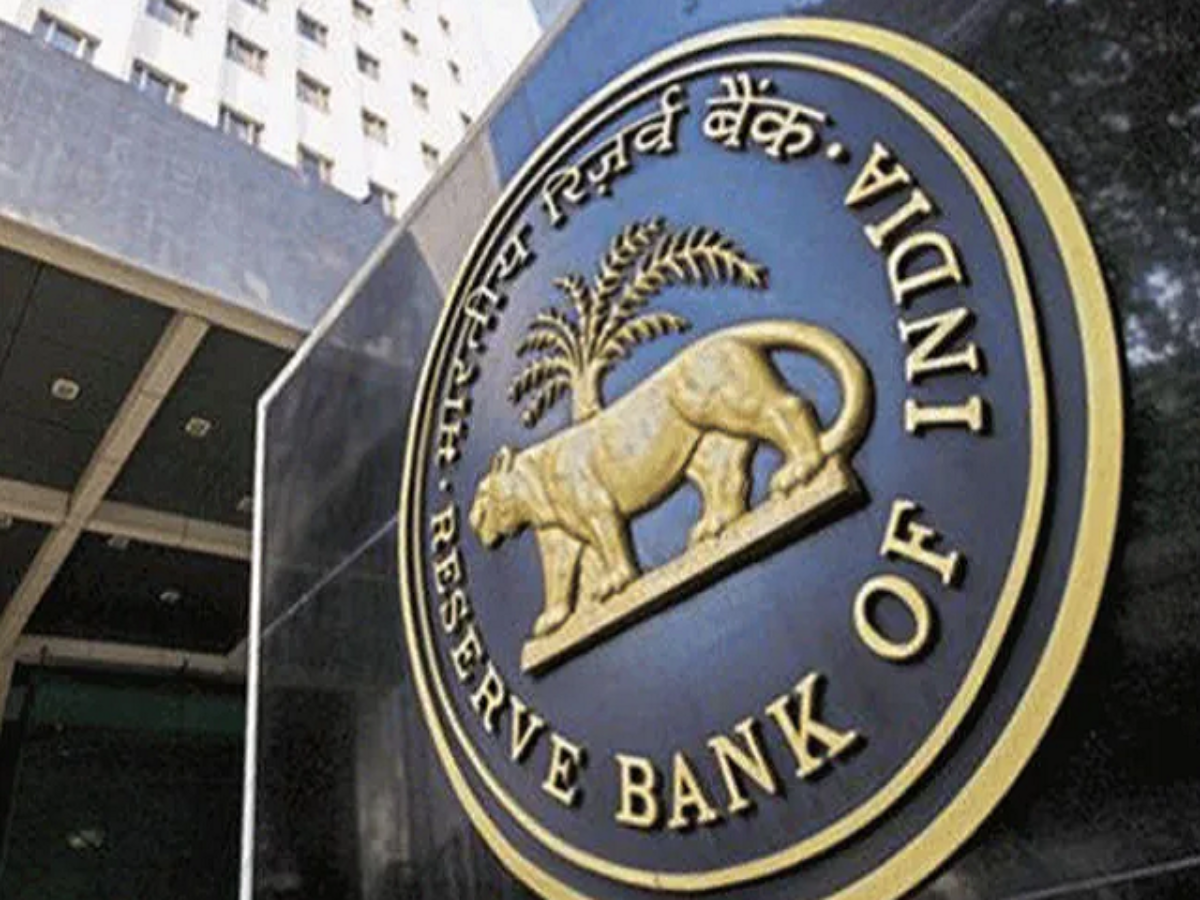
 India News16 hours ago
India News16 hours ago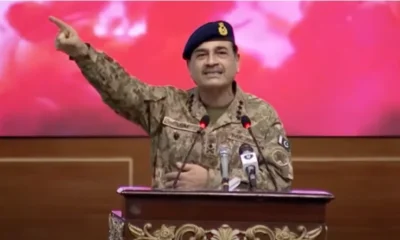
 Latest world news16 hours ago
Latest world news16 hours ago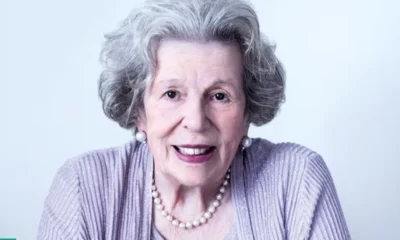
 India News5 hours ago
India News5 hours ago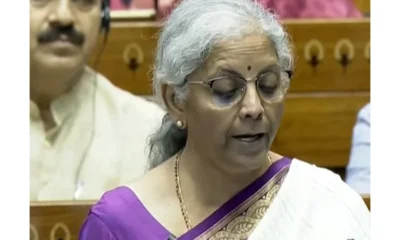
 India News5 hours ago
India News5 hours ago
 India News6 hours ago
India News6 hours ago
